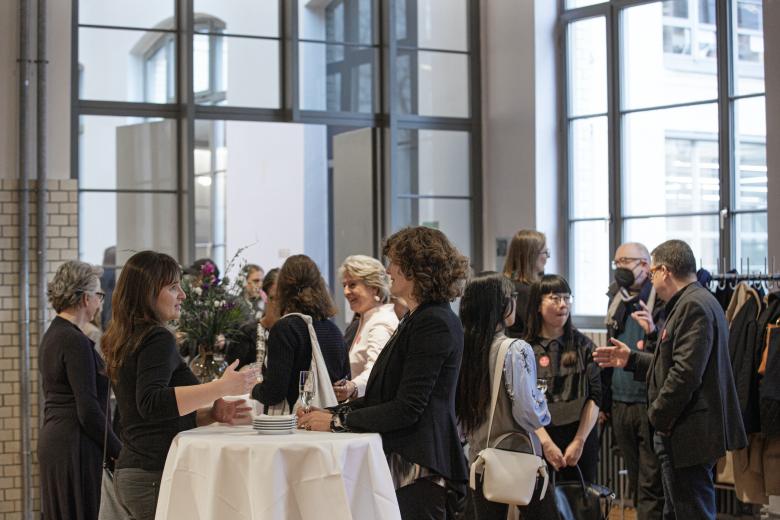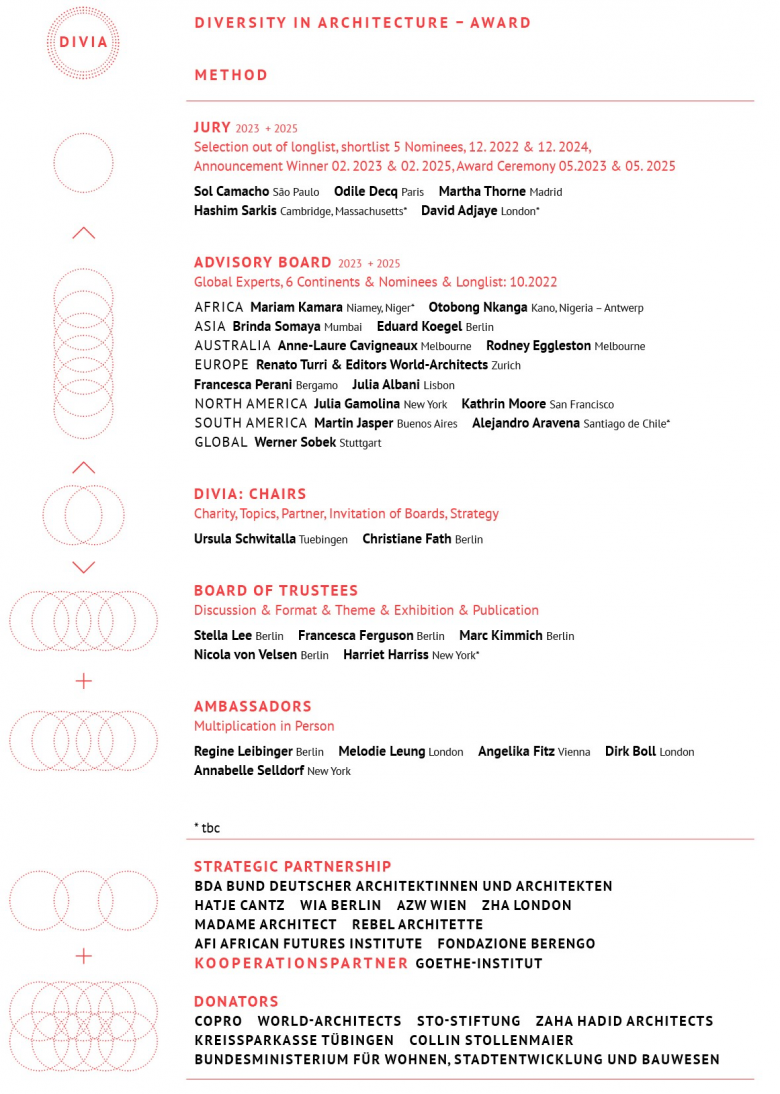Jury for the DIVIA Prize for Women Architects revealed
Where Are the Women Architects?
Compared to their male colleagues, female architects still do not receive the recognition they deserve. Art historian Ursula Schwitalla and architect Christiane Fath are committed to increasing the visibility of women in the architectural profession, having founded the Diversity in Architecture (DIVIA) platform in June 2021 for this purpose. On Wednesday, April 6, they revealed the jury for the DIVIA Women in Architecture Prize at the DAZ (Deutsches Architektur Zentrum) in Berlin.
Prejudice, structural discrimination, an elite male leadership: there are many reasons why the same architects and offices are always in the spotlight, why their faces and projects are reproduced again and again in the media. Ursula Schwitalla calls this a toxic star culture around old white men. Women architects are still underrepresented in leadership and academia, and thus also in public perception. "If even in 2016 at the opening of the Venice Architecture Biennale, only older men sit next to Alejandro Aravena," says the art historian, "then something cannot be right."
Ursula Schwitalla developed the book Women in Architecture, which was published last year by Hatje Cantz, from the lecture series she curated at the University of Tübingen on the subject. But, she said on Wednesday, a separate award for women architects could still provide much more visibility for women in architecture. The ratio of female architects to male architects in all awards is currently 1 to 4 — women are gaining visibility, but very slowly.
"We care about all minorities in architecture, but our first step is to make women visible. If we've been able to narrow the gender gap with the DIVIA award — one piece of the larger mosaic — we'll turn the spotlight on other injustices."
"It's a bit absurd to be standing here in the spring of 2022 explaining why such an award is important. I hope that the prize can progress very quickly and in a few years we can leave behind the current fixation on women. I wish for great diversity in the real world of work."
"The Challenge is very big in front of us. What really strikes me about DIVIA is that there are representatives from all over the world. These ambassadors and representatives in all these countries are able to really reach beyond our personal networks; they are able to build those bridges. It will take more time and more effort but it is really worthwhile."
"It’s a pleasure to be part of the first jury for the diversity in architecture award. I’m passionate about architecture, I’m also passionate on opening up the field to new talent, especially for women and other minorities. They have so much to contribute to the field and for reasons that perhaps we can explain but are not fair, they’ve been neglected in the past. I think that the way forward for communities is through great architecture, understanding cities, and bringing in diversity in everything we do create the most rich, interesting, and positive ways forward."
For the biennial prize, the international advisory board will draw up a longlist, from which the jury will first make a shortlist and then finally select a winner. All five finalists will then be able to show their work as part of a traveling exhibition and publication; the exhibition will be shown in Berlin, Vienna, São Paulo, and in the winner's country of origin. The prize founders agree that, ideally, in a few years the prize will no longer be explicitly geared to promoting female architects and can instead contribute to helping other minorities gain more visibility.
In today's male-dominated world of work, the contribution of the many women professionals is simply indispensable. Making female architects visible, recognizing and honoring their work, making female architects role models for the younger generation — it sounds so obvious but is a long way off, according to Melodie Leung, who works at Zaha Hadid Architects in London and is an ambassador for DIVIA. "It will take more time and more effort, but it is really worthwhile," she says, "It's great to be part of it and to kick that off — but we have a lot to do ahead of us."



